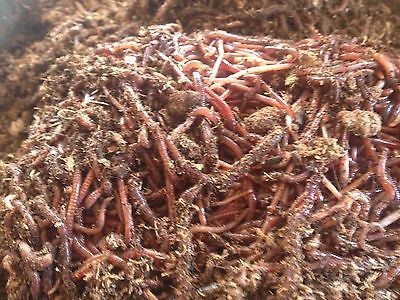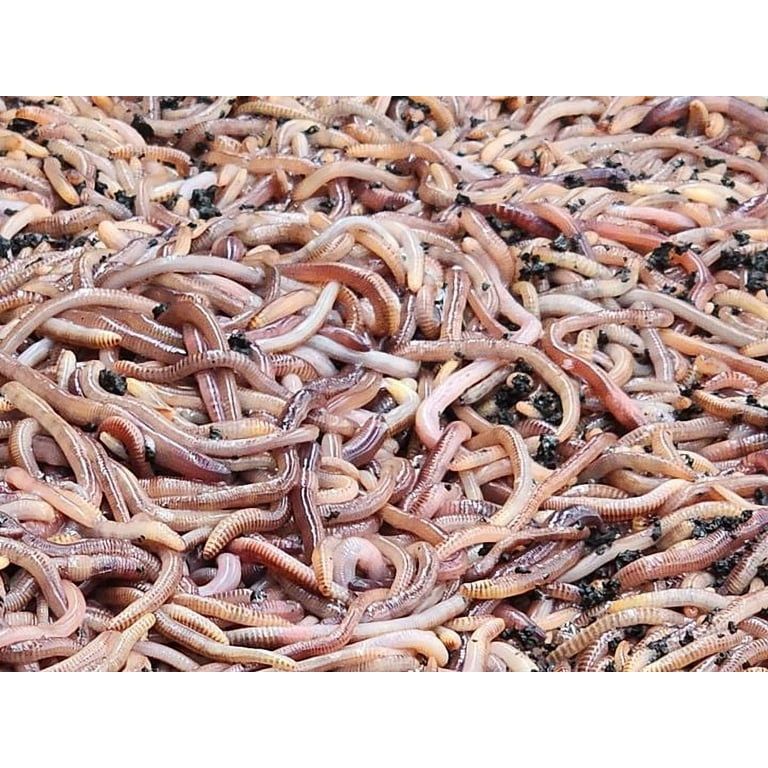Red wigglers: Essential tips for beginners
Wiki Article
Change Your Yard With Red Wigglers: Advice
By establishing a standard worm bin and understanding the nutritional requirements of these remarkable creatures, garden enthusiasts can significantly enhance soil high quality and plant health and wellness. The procedure of transforming organic waste right into abundant, fertile spreadings is both uncomplicated and rewarding.
Benefits of Red Wigglers
Red wigglers, scientifically called Eisenia fetida, are commonly hailed as nature's composting champs. These exceptional worms offer a number of vital advantages that can significantly boost yard health and wellness and efficiency. They are reliable decomposers, damaging down natural product such as kitchen area scraps and yard waste right into nutrient-rich vermicompost (red worms). This natural fertilizer enhances the soil, promoting healthy and balanced plant growth and enhancing soil structure.
One more noteworthy benefit of red wigglers is their capacity to minimize waste. By composting natural products that would or else add to garbage dump waste, they play a vital duty in sustainable gardening techniques. Including these worms into your gardening routine can lead to raised returns, healthier plants, and an extra dynamic yard environment, making them invaluable allies for gardeners looking for to enhance their eco-friendly footprint.
Establishing a Worm Container
Producing a worm bin is an important action for anyone seeking to harness the advantages of red wigglers in their gardening initiatives. A suitable worm bin can be made from various products, including plastic containers, wooden pet crates, or commercially offered worm bins. The first consideration is dimension; a bin that is at least 2 feet vast, 3 feet long, and 1 foot deep is typically suitable for a little to medium number of worms.It's vital to create a bed linens layer, using products such as shredded paper, cardboard, or coconut coir to provide a comfy setting for the worms. The bedding should be wet but not soaked, looking like a wet sponge - red worms.
Location the container in a place that preserves a regular temperature, preferably between 55 ° F and 77 ° F. Avoid straight sunshine or severe cold, as these conditions can hurt the worms. As soon as the bin is set up, allow the bed linen to clear up for a couple of days prior to introducing the red wigglers, guaranteeing they have a thriving atmosphere in which to prosper.
Feeding Your Red Wigglers
As soon as the worm container is developed and the red wigglers are introduced, correct feeding comes to be essential to maintaining a healthy here worm populace. Red wigglers thrive on a varied diet plan, primarily containing kitchen area scraps and natural products. Suitable foods include veggie peels, fruit scraps, coffee premises, and smashed eggshells. It is essential to prevent feeding them meat, milk, or oily foods, as these can produce undesirable odors and draw in parasites.When presenting food, cut the scraps into smaller sized items to help with quicker consumption. Additionally, hide the food underneath a layer of bedding product to stop fruit flies and other nuisances. Monitor the feeding regularity; a basic policy is to give food every 1-2 weeks, relying on the variety of worms and the amount of food waste generated.

Harvesting Worm Spreadings
Exactly how can you tell when it's time to gather worm spreadings from your container? The preparedness of worm castings is indicated by a few essential signs. The product in the container need to show up dark, brittle, and abundant in structure, appearing like a great soil. In addition, the initial food scraps need to be substantially broken down or nearly unrecognizable, showing that the worms have actually effectively refined them.Another indication is the decrease in worm task; as the castings build up, worms often tend to migrate in the direction of fresher food resources. If you notice a decrease in worm activity and the existence of castings at the bottom of the container, it's a clear signal that harvesting is due.
To gather, delicately scoop out the spreadings, taking care to reduce disturbance to the worms. A preferred approach includes separating the spreadings making use of light; worms often tend to delve away from the light, enabling you to collect the spreadings extra quickly.
Collecting consistently, roughly every 3 to 6 months, makes certain a constant supply of this nutrient-rich amendment for your gardening undertakings. Bear in mind, the high quality of your spreadings directly influences the health of your plants.
Using Spreadings in Your Yard
(eisenia fetida for sale)Utilizing worm castings in your yard can significantly improve dirt health and wellness and plant growth - red worms. These nutrient-rich natural fertilizers provide necessary macro and trace elements, enhancing the total fertility of your dirt. By incorporating worm spreadings into your garden beds, you can promote valuable microbial task, which assists in vitamins and mineral availability and boosts soil structureTo utilize worm castings effectively, blend them into the top couple of inches of dirt prior to growing. You can produce a nutrient-dense fluid fertilizer by soaking worm spreadings in water for a week, after that applying the resulting "worm tea" straight to your plants.
Worm spreadings also improve wetness retention within the soil, reducing the requirement for regular watering. Their natural pH equilibrium makes them appropriate for different plant types, from vegetables to ornamentals. Regularly incorporating worm spreadings into your gardening routine can result in durable plant development, raised yields, and a general much healthier yard ecological community. Accept the advantages of worm castings for a successful and sustainable garden.
Conclusion
By developing a worm bin, giving proper food, and consistently gathering nutrient-rich spreadings, garden enthusiasts can foster a sustainable ecological community. The use of worm castings and "worm tea" additionally contributes to moisture retention and nutrient schedule in the dirt.Report this wiki page